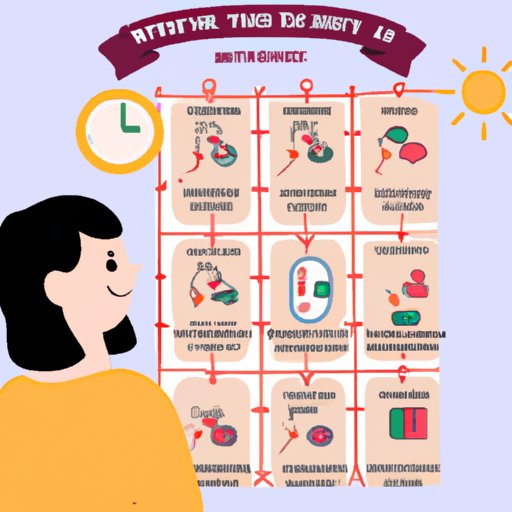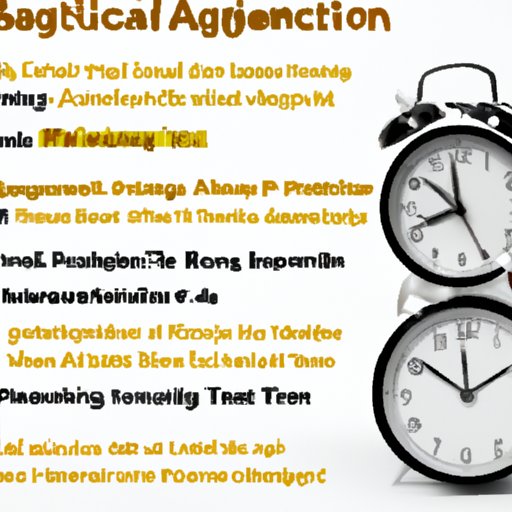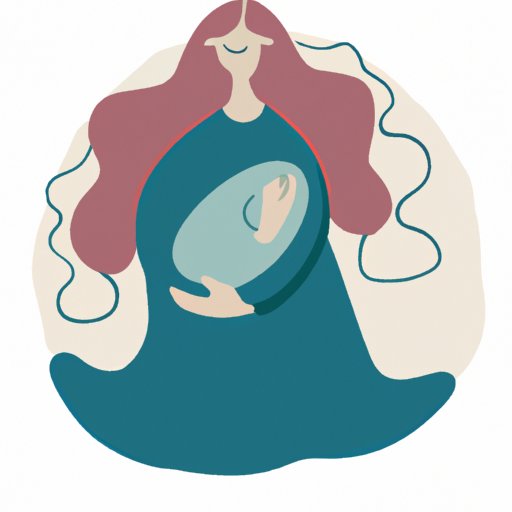Introduction
Having a baby is an exciting time in any couple’s life, but it can also be a stressful one. Once you’ve welcomed your little bundle of joy into the world, you may be wondering when you should start thinking about having another. In this article, we’ll explore the recommended timeline for getting pregnant after giving birth and offer tips for maximizing your chances of conception.

Exploring the Recommended Timeline for Getting Pregnant After Giving Birth
When it comes to conceiving after childbirth, there is no definitive answer as to how long you should wait before trying to conceive again. According to the American College of Obstetricians and Gynecologists (ACOG), “It is generally recommended that women wait at least 18 months between pregnancies.” This is because the body needs time to recover physically and emotionally from the last pregnancy and delivery.
However, this is just a general guideline, and there are a number of factors that can affect the timeline for getting pregnant again. These include your age, health, and the amount of time you’ve been breastfeeding. It’s important to discuss these factors with your doctor before making a decision about when to attempt another pregnancy.
How to Maximize Your Chances of Conception After Postpartum Recovery
If you’re ready to try for another baby, there are some steps you can take to maximize your chances of conception. First, make sure you’re physically and emotionally ready for another pregnancy. This means eating a balanced diet, taking prenatal vitamins, exercising regularly, and reaching and maintaining a healthy weight.
You should also discuss any potential risks with your doctor, such as preterm labor, low birth weight, or placental problems. Knowing what to expect can help you prepare for a successful pregnancy.

Key Factors That Affect the Timeframe for Getting Pregnant Again
Your doctor will likely recommend waiting at least 18 months before attempting another pregnancy. However, there are some factors that can affect this timeline, such as:
- Physical recovery from childbirth: It takes time for your body to heal and recover from childbirth, so it’s important to give yourself enough time to rest and recuperate before trying for another baby.
- Emotional and psychological readiness: Having a baby can be an emotional rollercoaster, and it’s important to make sure you’re emotionally and psychologically prepared for another pregnancy before trying to conceive.
- Availability of support system: Having a strong support system in place, such as family and friends, can make a big difference when it comes to raising a child. Make sure you have the necessary support in place before attempting another pregnancy.
The Pros and Cons of Becoming Pregnant Again Soon After Delivery
There are both benefits and challenges to becoming pregnant soon after giving birth. On the plus side, having a second baby close in age can provide companionship for your older child and make parenting easier. It can also mean that you’re able to breastfeed both children simultaneously, which can save time and energy.
On the other hand, having a baby too soon after the first can be physically and emotionally draining. You may not have had enough time to recover from the last pregnancy, and you may not feel emotionally ready for another. It’s important to consider both the pros and cons before deciding to become pregnant again.
Tips for Preparing Your Body for Conception After Having a Baby
If you’re ready to try for another baby, there are some steps you can take to maximize your chances of conception. These include:
- Eating a balanced diet: Eating a healthy, balanced diet can help ensure that your body has all the nutrients it needs to conceive and carry a baby to term.
- Taking prenatal vitamins: Taking prenatal vitamins can help ensure that you’re getting all the essential vitamins and minerals needed for a healthy pregnancy.
- Exercising regularly: Regular exercise can help keep your body fit and healthy, which can increase your chances of conception.
- Reaching and maintaining a healthy weight: Being overweight or underweight can decrease your chances of conceiving, so it’s important to reach and maintain a healthy weight before trying to conceive.

Understanding the Potential Risks of Pregnancy So Soon After Delivery
Although there are some benefits to having a second baby soon after the first, there are also some risks. These include:
- Preterm labor: Women who become pregnant again soon after delivery are more likely to deliver their babies prematurely.
- Low birth weight: Babies born too soon may be at risk for having a lower than average birth weight.
- Placental problems: Having a baby soon after the first can increase the risk of placental problems, such as placenta previa or placental abruption.
It’s important to understand the potential risks before deciding to become pregnant again right away.
Conclusion
Deciding when to have another baby is a personal decision that should be made in consultation with your doctor. The American College of Obstetricians and Gynecologists recommends waiting at least 18 months between pregnancies, but there are a number of factors that can affect the timeline. It’s important to consider both the pros and cons of becoming pregnant again soon after delivery and to understand the potential risks. Taking steps to prepare your body for conception, such as eating a balanced diet and taking prenatal vitamins, can help increase your chances of conceiving.
No matter when you decide to have another baby, it’s important to remember that every pregnancy is different. Taking the time to prepare your body for conception and understanding the potential risks can help ensure a safe and healthy pregnancy.
(Note: Is this article not meeting your expectations? Do you have knowledge or insights to share? Unlock new opportunities and expand your reach by joining our authors team. Click Registration to join us and share your expertise with our readers.)
